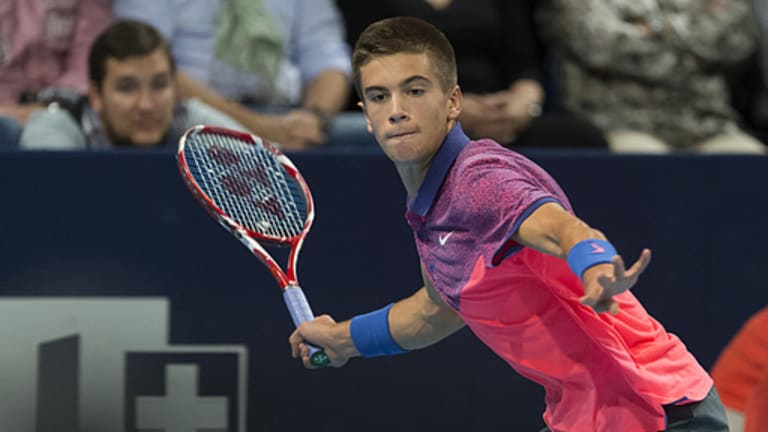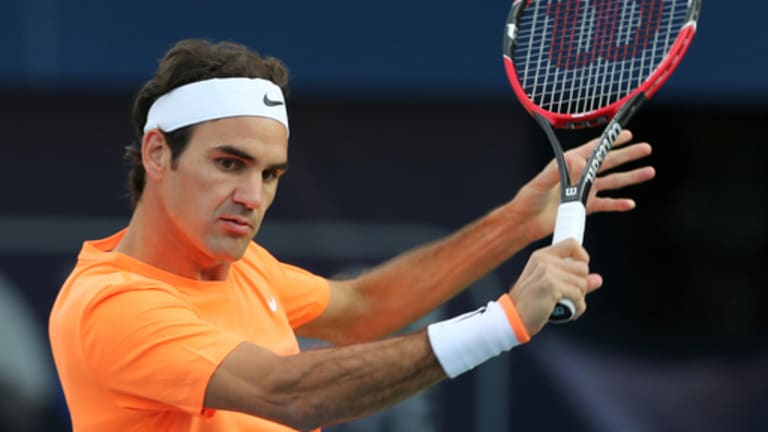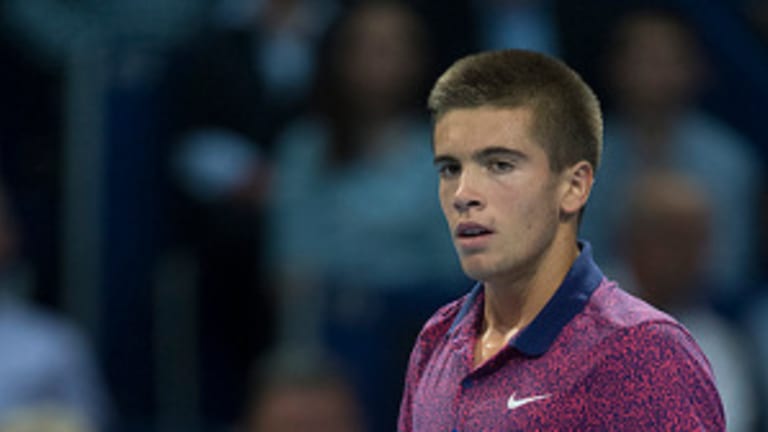What does a tennis prodigy need most?
“Weapons” are high on everyone's list, and for good reason. Serena Williams, Roger Federer, Rafael Nadal, Maria Sharapova: The most successful players can create their own pace and fire their winners from anywhere.
Movement has become ever more crucial over the last 10 years; when the game is played almost entirely from the baseline, you need to be able to cover it.
And, of course, there’s “mental toughness,” an amorphous term that encompasses the ability stay positive, control your emotions, and not shy away from the big stage or the big moment.
I present this (admittedly well-worn) checklist because today was a day to wonder about the nature, and future, of tennis prodigies. The ATP’s latest, 18-year-old Borna Coric, was up against the tour’s ultimate prodigy made good, 33-year-old Roger Federer. Ranked a career-high No. 84, Coric is the youngest player in the Top 100. The previous day, he had beaten Andy Murray in straight sets; last year he beat Rafael Nadal in straights. To complete his connection to the Big 4, Coric has been dubbed “Baby Djokovic." And it's true, the similarities between the Croat and the Serb do go deeper than their thick shocks of dark hair.
Like Djokovic, Coric is especially good with his two-handed backhand—he calls it his favorite shot—and his return of serve. Visually, though, he's at his most Djokovician when he’s hitting a forehand from deep in the court. Both players use a Western grip and a slightly open stance, and they both enjoy standing back, absorbing the other player’s pace, and sending the ball back with a little extra interest. “Dynamic counterpunching” is the phrase that comes to mind when I see them set their feet to return a well-struck ball on their forehand sides—both of them seem to relish that moment. Coric, like Djokovic, is not a go-for-broke gunner. He enjoys building rallies and working the ball, with margin, toward the corners. He relies on his legs, as much as his arms, to win points. At the moment, his biggest weapon is his energy.


